It’s a place shaped by foreign trade, yet one of the most “Taiwanese” parts of Taipei. The merchants of Dadaocheng (大稻埕) — to use the post-World War II Mandarin pronunciation of a neighborhood previously known as Twatutia — grew rich after tea-sippers as far away as New York developed a taste for oolongs grown in the hills of Taiwan.
Almost everyone who’s spent time in Taiwan has taken a look at Dihua Street (迪化街), a thoroughfare rightfully famous for its ornate shop-houses. Because so many of the businesses here specialize in dried fruits and mushrooms, Chinese medicines and other traditional items seldom wrapped in plastic, even the shortest of strolls is an olfactory and visual pleasure.
Not everyone likes crowds, however, and Dihua Street can get very crowded. Setting arbitrary boundaries for Dadaocheng — Ningxia Road (寧夏路) in the east, Minquan West Road (民權西路) to the north, Civic Boulevard (市民大道) on the southern edge, and naturally the Tamsui River (淡水河) to the west — I set off on foot from Taipei Main Station. My hope: That I would find cultural and architectural gems that I could enjoy without clashing elbows or risking death by YouBike.
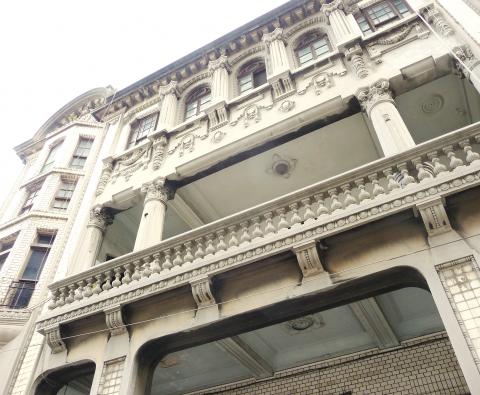
Photo: Steven Crook
My zigzag route started at the southern end of Xining North Road (西寧北路), where the Dadaocheng Pioneering Monument (大稻埕開埠紀念碑) stands on the sidewalk just outside Municipal Zhongxiao Junior High School (市立忠孝國中). Erected in 1985, this handsome black slab bears, on the side facing the traffic, the characters Qing Dadaocheng Shang Bu (清大稻埕商埠, “[Site of] the Qing-era Dadaocheng Commercial Port”).
TEA MERCHANTS
The reverse states a few well-known historical facts. In 1853, a group of merchants and their families originally from Fujian’s Tongan County were forced to leave what’s now called Wanhua District (萬華) in south-western Taipei. They relocated downriver to Dadaocheng (the toponym means “big open space for drying rice”), a location less convenient for trading with the interior, but more accessible for oceangoing vessels.
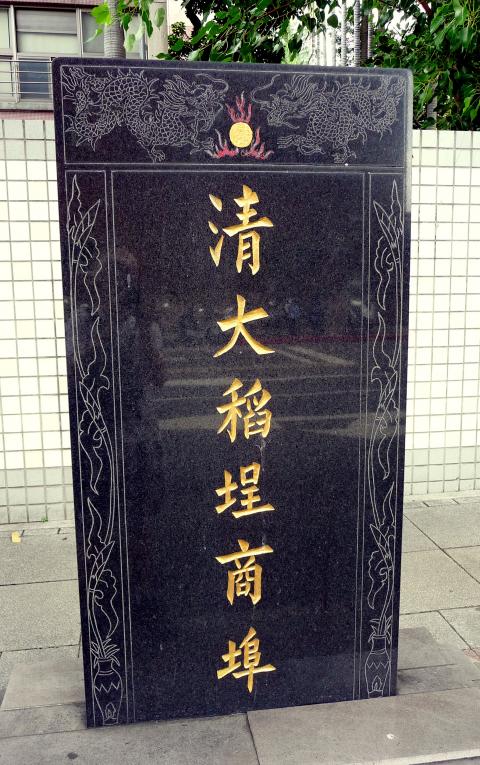
Photo: Steven Crook
In 1869, Dadaocheng-based tea sellers broke into the international market, and Wanhua was soon eclipsed as a center of commerce. For the families that had fled Wanhua, overtaking that town surely brought a degree of satisfaction.
One of the leading tea traders was Lee Chun-sheng (李春生, 1838-1924), and from the monument I made my way north along Guide Street (貴德街) to an 83-year-old church that bears Lee’s name. In visual terms, Lee Chun-sheng Memorial Presbyterian Church (李春生紀念教堂) isn’t Taiwan’s most interesting Christian places of worship. It’s kept locked between services, and many of the windows have been bricked up.
The church is at number 44; across the street at numbers 51 and 53 are the Qianqiu Street Shophouses (千秋街店屋), a two-story structure where tea was packed and stored; Qianqiu Street is the old name of this stretch of Guide Street.
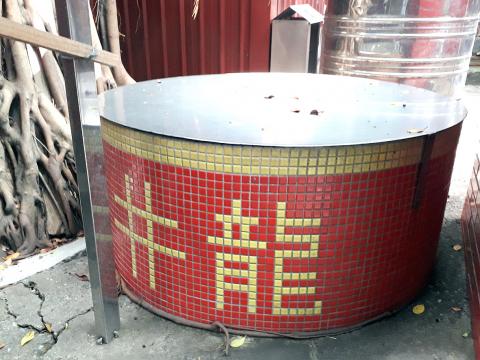
Photo: Steven Crook
Because the Tamsui River flooded from time to time, the ground floor of the shophouses and some newer buildings nearby is substantially above street level. The corner part of the shophouse block has been renovated and (judging by the sign outside) turned into a venue for cultural-creative industry startups. The remainder, unfortunately, is falling into ruin.
In better condition, yet showing its age, is the Chen Tian-lai Residence (陳天來故居) at number 73. The man who commissioned the construction of this imposing house lived from 1872 to 1939. He made his fortune by exporting tea to Southeast Asia, then diversified into restaurants and theaters in Taipei. He was a patron of Taipei Confucius Temple (臺北孔廟).
GUISUI STREET
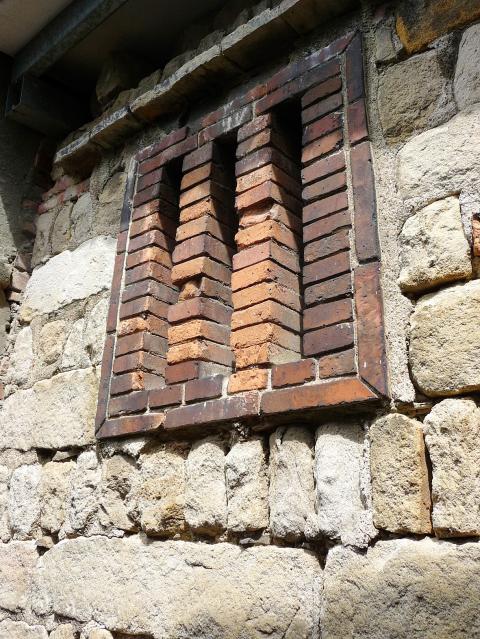
Photo: Steven Crook
The residence is not open to the public, and it’s hard to tell if any part of it is permanently occupied, so it’s pleasing to know good use is being made of another and even more impressive house near the river. Since the 1960s, the Koo Family Mansion (大稻埕辜宅) has been a kindergarten. The Koos have been one of Taiwan’s leading business clans since the late 19th century. The mansion, which was built in 1920, is at number 9, Lane 303, Guisui Street (歸綏街).
Running east-west between Huanhe North Road (環河北路) and Chengde Road (區承德), Guisui Street has all manner of shrines, old-fashioned businesses, and timeworn buildings. I strolled away from the river to Ningxia Road, then turned north. The plot on the corner of Ningxia Road and Jinxi Street (錦西街) is occupied by a large police station and has two landmarks of historical interest.
The wall that separates the police complex from Alley 2, Lane 97, Guisui Street was built sometime before 1909 using stone blocks recycled after the demolition of Taipei’s city walls.
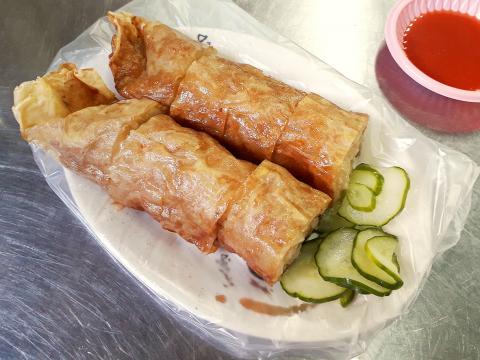
Photo: Steven Crook
What’s called the Old Taipei Northern Police Department (原台北北警察署) is a Japanese-era public building that’s being converted into the Taiwan New Cultural Movement Memorial Hall (台灣新文化運動紀念館). The memorial hall, which is scheduled to open to the public next month, will celebrate the achievements of Dr. Chiang Wei-shui (蔣渭水, 1890-1931) and others who inspired cultural regeneration and resistance to Japanese rule.
As the crow flies, Chiang’s old place of work is 600m to the southwest. A plaque outside marks the site of the former Da-an Hospital (大安醫院), where Chiang practiced medicine when not contemplating what he called Taiwan’s “cultural malnutrition.” But rather than go there, I made my way northwest to Dadaocheng Cisheng Temple (大稻埕慈聖宮).
In many respects, Cisheng Temple is a standard Mazu shrine to the goddess Mazu. It’s not particularly old, having been founded in the 1850s. It’s neither unusually large not conspicuously popular. At the back, however, there’s something a little special: A sealed well that’s believed to contain a “dragon spirit” (龍井公), and an altar at which this entity is represented by neither a joss nor a tablet, but by a large sheet of yellow paper. I couldn’t decipher the cursive Chinese script or the trigram on the paper.
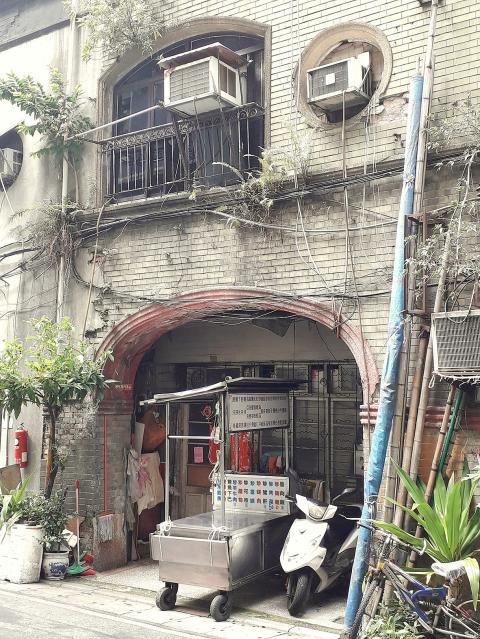
Photo: Steven Crook
In front of the temple several vendors sell traditional hot foods. I ordered a portion of jijuan (雞捲), known to Taiwanese-speakers as toikng (多餘捲, “leftovers [turned into] rolls”). It consists of pork and other ingredients, deep-fried in a tofu-skin wrapping, then served with a mildly sweet-spicy dip. After a morning immersed in the Taiwan of yore, it seemed appropriately old-school.
Steven Crook has been writing about travel, culture, and business in Taiwan since 1996. Having recently co-authored A Culinary History of Taipei: Beyond Pork and Ponlai, he is now updating Taiwan: The Bradt Travel Guide.
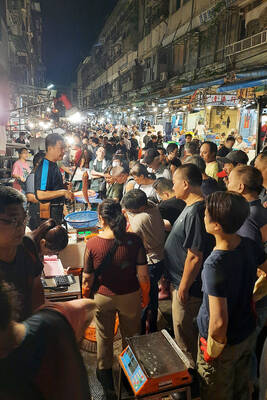
Taiwan is one of the world’s greatest per-capita consumers of seafood. Whereas the average human is thought to eat around 20kg of seafood per year, each Taiwanese gets through 27kg to 35kg of ocean delicacies annually, depending on which source you find most credible. Given the ubiquity of dishes like oyster omelet (蚵仔煎) and milkfish soup (虱目魚湯), the higher estimate may well be correct. By global standards, let alone local consumption patterns, I’m not much of a seafood fan. It’s not just a matter of taste, although that’s part of it. What I’ve read about the environmental impact of the
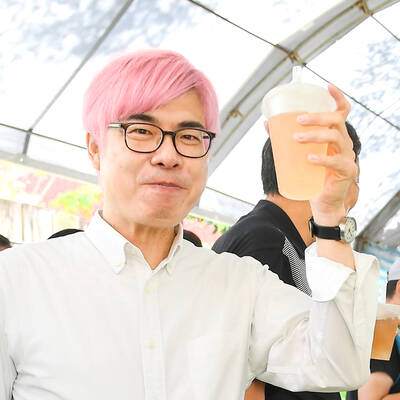
It is jarring how differently Taiwan’s politics is portrayed in the international press compared to the local Chinese-language press. Viewed from abroad, Taiwan is seen as a geopolitical hotspot, or “The Most Dangerous Place on Earth,” as the Economist once blazoned across their cover. Meanwhile, tasked with facing down those existential threats, Taiwan’s leaders are dying their hair pink. These include former president Tsai Ing-wen (蔡英文), Vice President Hsiao Bi-khim (蕭美琴) and Kaohsiung Mayor Chen Chi-mai (陳其邁), among others. They are demonstrating what big fans they are of South Korean K-pop sensations Blackpink ahead of their concerts this weekend in Kaohsiung.
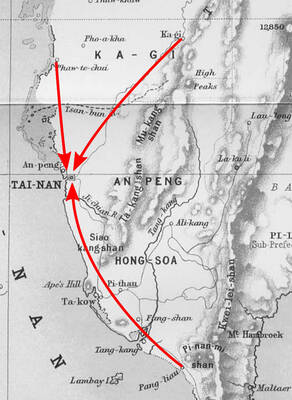
Oct 20 to Oct 26 After a day of fighting, the Japanese Army’s Second Division was resting when a curious delegation of two Scotsmen and 19 Taiwanese approached their camp. It was Oct. 20, 1895, and the troops had reached Taiye Village (太爺庄) in today’s Hunei District (湖內), Kaohsiung, just 10km away from their final target of Tainan. Led by Presbyterian missionaries Thomas Barclay and Duncan Ferguson, the group informed the Japanese that resistance leader Liu Yung-fu (劉永福) had fled to China the previous night, leaving his Black Flag Army fighters behind and the city in chaos. On behalf of the

The captain of the giant Royal Navy battleship called his officers together to give them a first morsel of one of World War II’s most closely guarded secrets: Prepare yourselves, he said, for “an extremely important task.” “Speculations abound,” one of the officers wrote in his diary that day — June 2, 1944. “Some say a second front, some say we are to escort the Soviets, or doing something else around Iceland. No one is allowed ashore.” The secret was D-Day — the June 6, 1944, invasion of Nazi-occupied France with the world’s largest-ever sea, land and air armada. It punctured Adolf